�
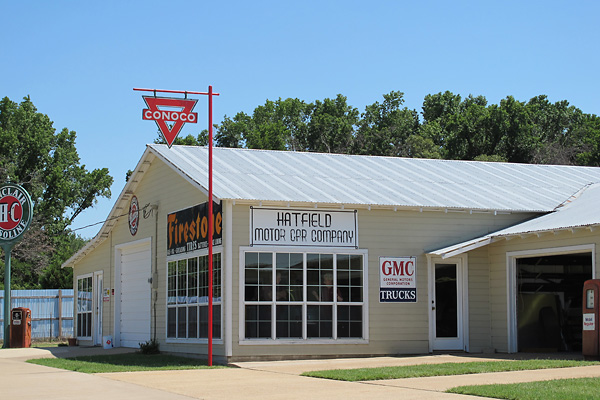
�
�
BritishV8 2012: Visit to Hatfield Restorations
� ��
as published in BritishV8 Magazine, Volume XX Issue 2, December 2012�
�
by Curtis Jacobson, Art Gertz, Tim Body, Rick Ingram, Bill Young, John Fenner, Dave Craddock, & Mike Maloney�
�
Introduction
��
One of the most exciting and inspirational outings we enjoyed during BritishV8 2012 was�
a tour of Hatfield Restorations in Canton, Texas. From the photos below, you won't have�
any trouble comprehending why this shop has such a sterling reputation. We can report that�
their amazing skill, knowledge, and attention to hot-rodding detail are matched by their�
genteel hospitality. We had a great time!�
�
Photos From Our Visit!
��
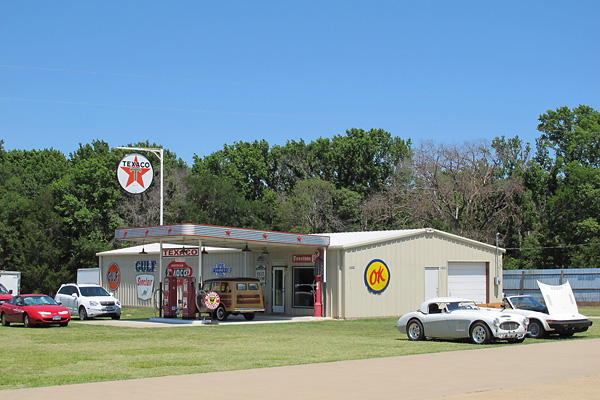
�
Hatfield Restorations' model gas station (with showroom inside).
�
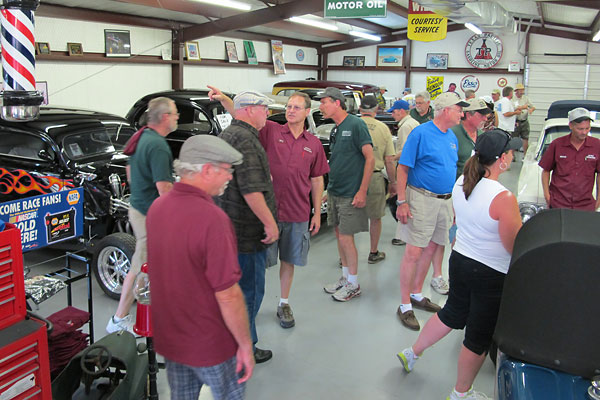
�
Gary Hatfield welcomes BritishV8 2012 participants to the Hatfield Restorations display room.
�
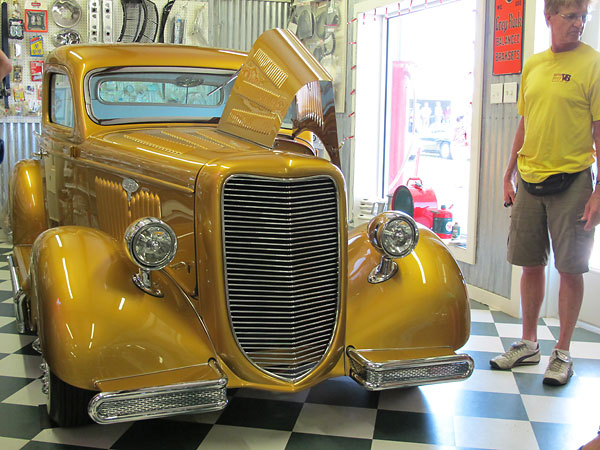
�
Gary Hatfield dragged this historically significant hot-rodded pickup truck back from a farmyard in rural
�
Oregon. Derelict and apparently long forgotten, Gary recognized this 1935 Ford Pickup as a distinguished
�
veteran of the California hot rodding scene of the early sixties. Gene Winfield, proprietor of the famous
�
Winfield Custom Shop of Modesto, originally conceived this vehicle as a shop truck but it turned into a
�
show truck and was substantially restyled through three distinct iterations. Gary decided to take it
�
all the way back to how it was presented at car shows during 1961.
�
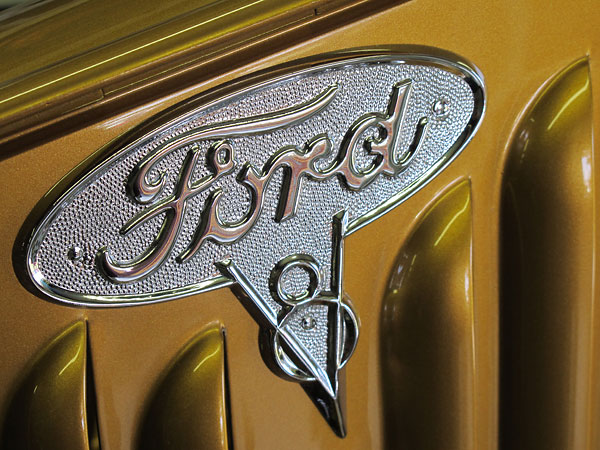
�
Ford V8 emblem.
�
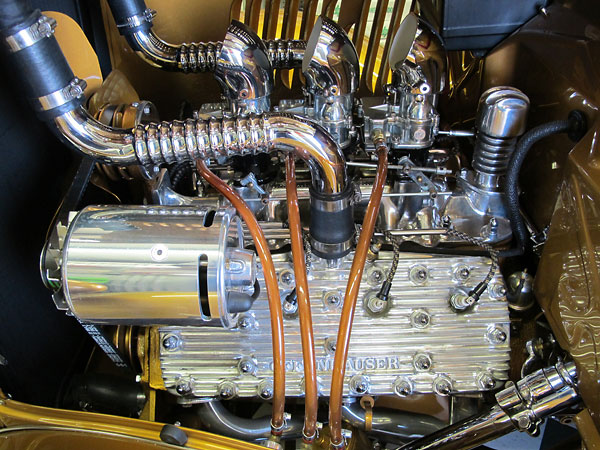
�
In 1961 trim, Winfield's pickup used a fully chromed Ford-Mercury flathead engine. By 1963 the flathead
�
had been replaced with a Chevrolet Corvette engine. For the restoration, Hatfield Restorations sourced
�
a proper replacement engine from H&H Flatheads of La Cresenta, California. So what's special about
�
Ford's flathead? Design: it was the first mass-produced "monobloc" V8 (i.e. with one casting comprising
�
the crankcase and both banks of cylinders). Longevity: it was produced for 21 years (1932-1953).
�
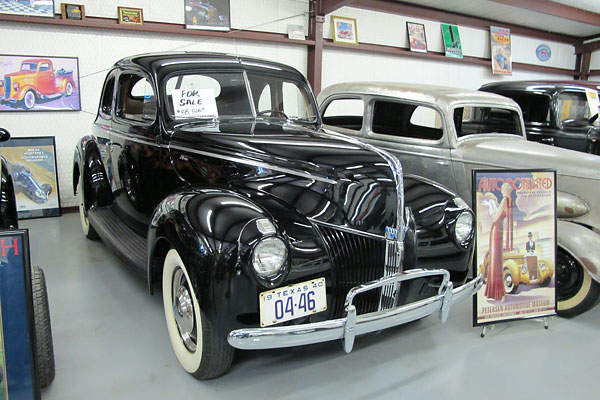
�
This 1940 Ford Coupe was one of Gary Hatfield's earliest restorations. It's now for sale again.
�
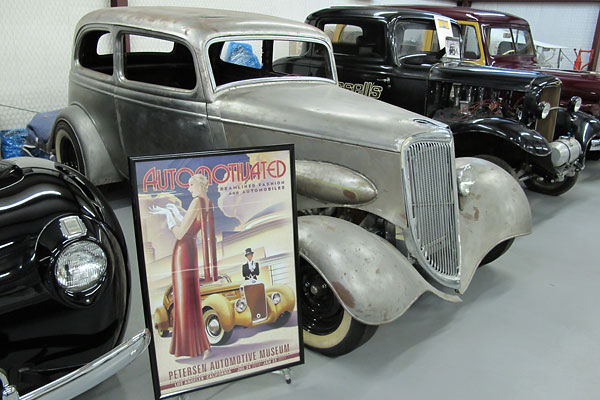
�
"Is that a Hemi under the hood, or are you happy to see me?" The bonnet of this '34 Ford Victoria
�
has evidently been modified to clear an early Chrysler Hemi or an Ardun converted flathead Ford V8.
�
"When I'm finished, you won't be able to tell me from a deLorean!" Well, no. This car will be painted one
�
day soon, but Gary Hatfield isn't worried about surface rust while it's stored here in his air-conditioned
�
display building. Very minor surface corrosion, mostly from hand prints, will easily come off first.
�
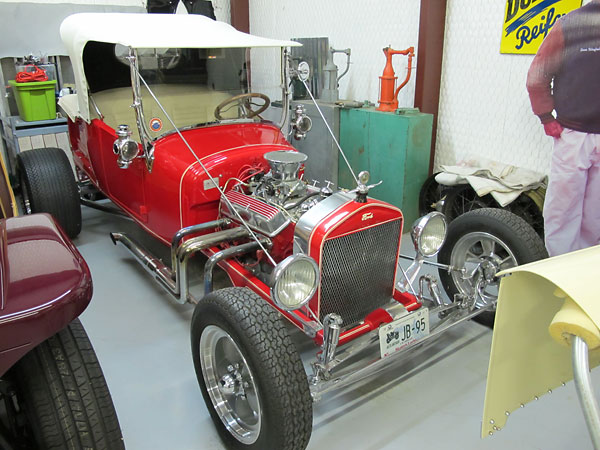
�
T-Bucket, in early-60s style as popularized by Ed "Kookie" Byrnes on the TV show "77 Sunset Strip".
�
Note windshield stays, cowl-mounted lamps, and pin-striped frame & body. Front tires aren't too
�
skinny and rear tires aren't too wide. See how American Racing "Torq Thrust" wheels are installed
�
with no front brakes? This T-Bucket appears thoroughly authentic to the 1960s period!
�
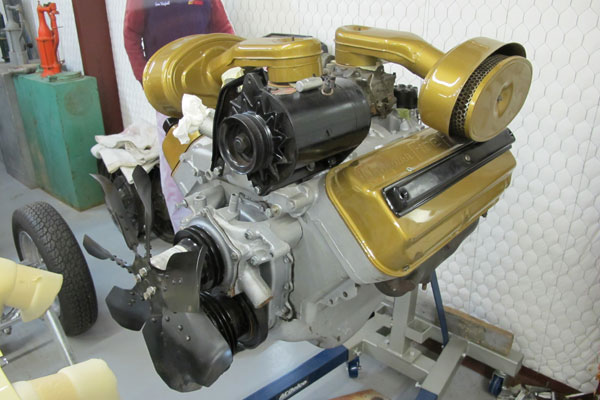
�
This is obviously a Chrysler Hemi engine. The valve covers read "Chrysler FireFlight" which
�
is a little unusual because FireFlight was a model line within Chrysler's DeSota range, so
�
"DeSota Fireflight" valve covers are more usually seen. The dual four-barrel induction
�
system was probably borrowed from a 1956 or 1957 DeSota Adventurer.
�
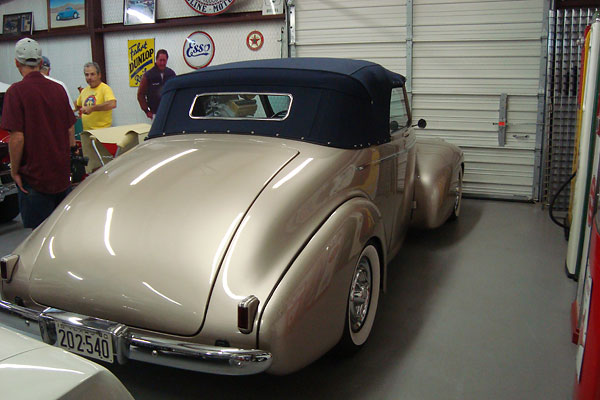
�
Gary Hatfield's personal car is a 1939 Buick Century Convertible. GM chose Century as a model name
�
to indicate that with its 320cid straight-eight engine it could reach one hundred miles per hour. In
�
1939, Buick pioneered directional signals: they designed turn signal lamps into a medallion housing
�
centered on the trunk lid. Gary has shaved that medallion, and the taillamp assemblies you see here
�
are for brake lights only. The Century model carried over with minimal changes for 1940. For 1941
�
it came with larger, more elaborate taillamps and in 1942 it was replaced with an all new design.
�
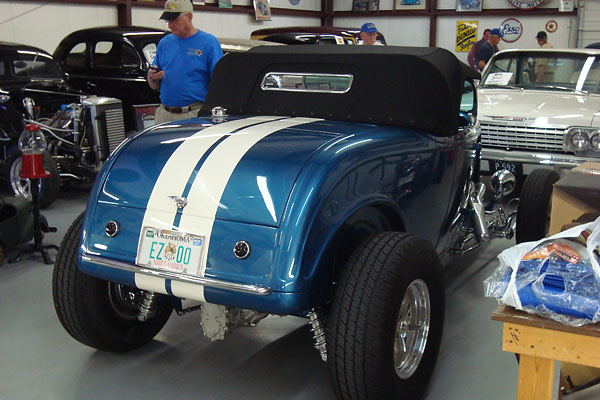
�
(We really like this rear bumper.)
�
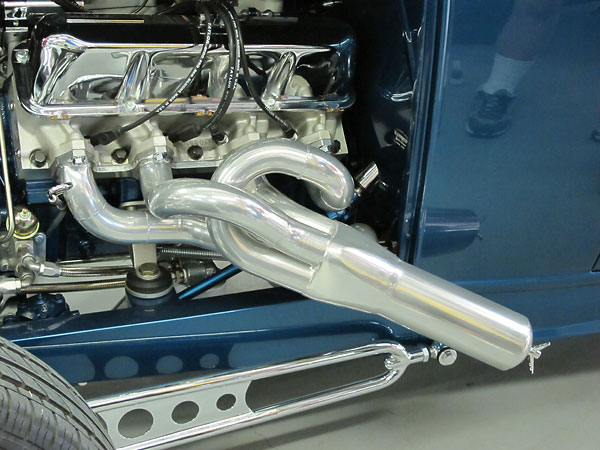
�
Headers with removable plugs and with exhaust flow diverted through hidden mufflers.
�
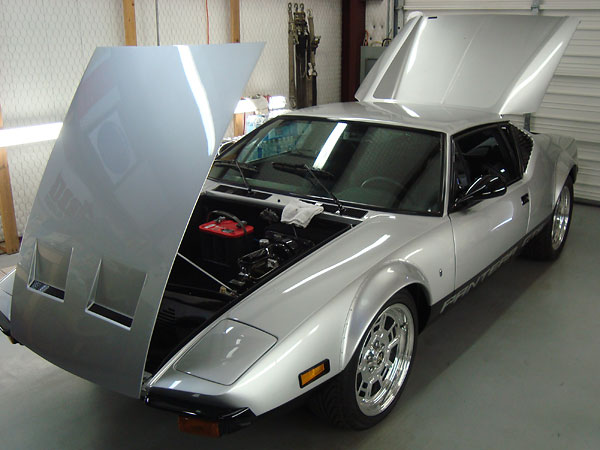
�
1974 Pantera GTS. Panteras were built by the De Tomaso car company of Italy from 1971 into 1991.
�
Ford Motor Company imported and sold roughly 5,500 of them in the United States before stopping
�
in 1975. In total, about 7,200 Panteras were built. The GTS variant was only offered in 1974.
�
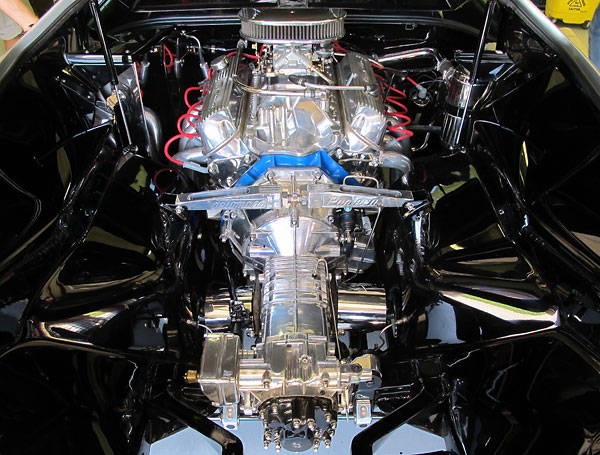
�
Ford 351 cu in (5.8 L) V8 engine mated to a ZF transaxle.
�
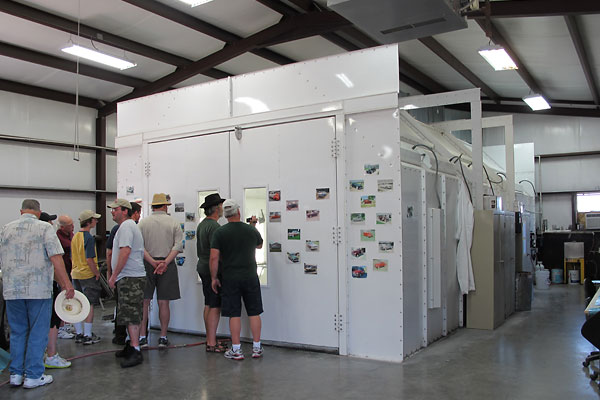
�
Paint booth.
�
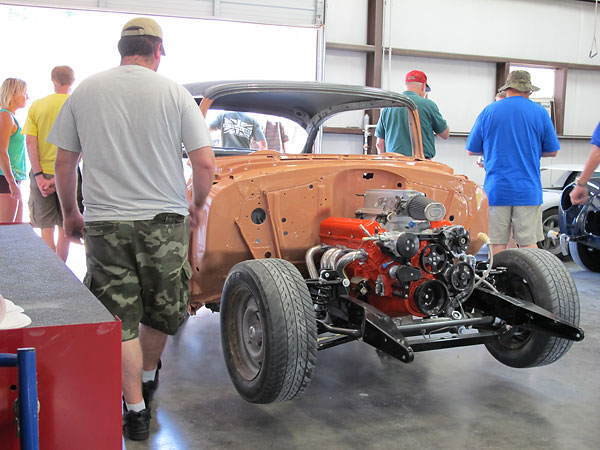
�
This 1955 Chevrolet is shown fresh out of the Hatfield Restorations paint booth with a two-tone
�
coral / shadow gray paint scheme. Chevy offered fourteen solid colors plus 23 different two-tone
�
combinations; and this is one of them. Chevy promoted the '55 model's "Motoramic" styling and
�
"Glide Ride" suspension, but their new "Turbo Fire" V8 engine would have more lasting impact.
�
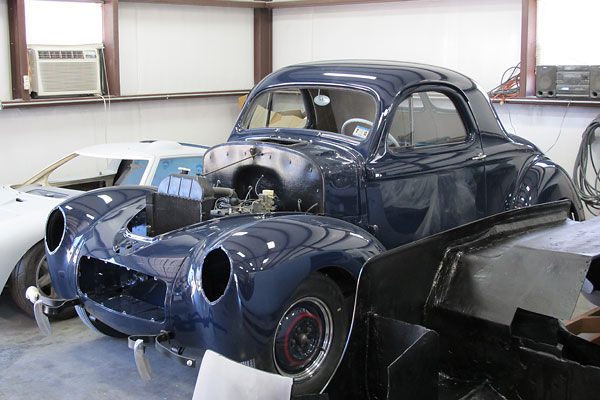
�
1940 Willys Coupes are cute as buttons if you take their tall, pointy hoods off! Note: 1941 models
�
look similar, except for their grilles. After that, production ceased due to World War II. Note
�
that these cars originally came with flathead four cylinder engines as seen here. Intact
�
examples are very rare now; so many have been hot-rodded or turned into racecars.
�
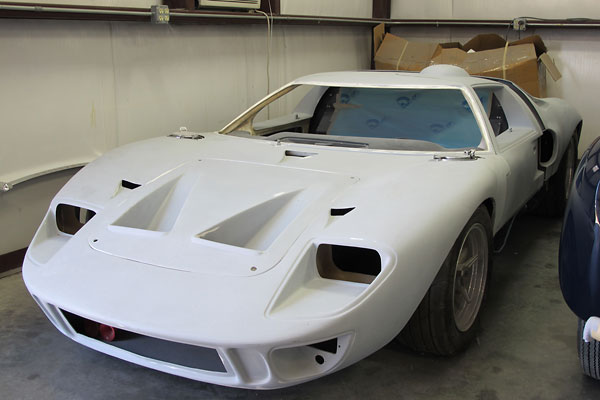
�
GT40 replica.
�
�
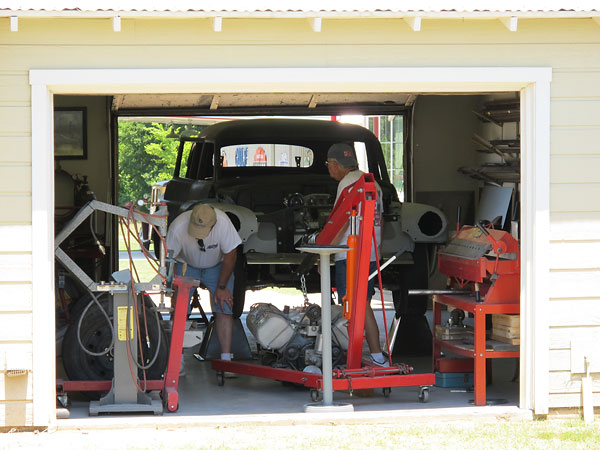
�
Body shop.
�
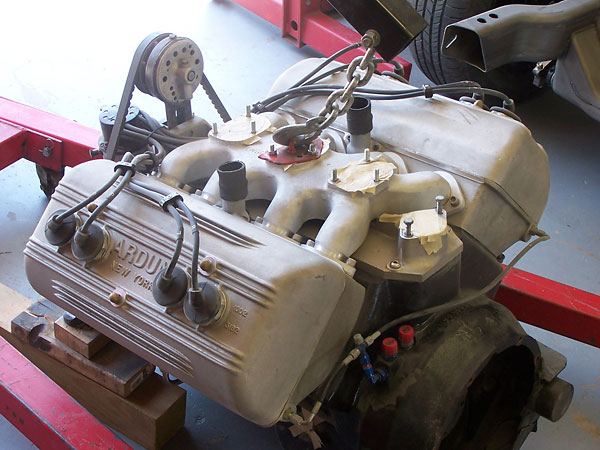
�
Brothers Zora and Yura Arkus-Duntov (who were newly arrived Russian immigrants at the time)
�
developed cast-aluminum hemi heads as an aftermarket performance upgrade for Ford "flathead" V8
�
engines. Production was outsourced to a foundry in England. Starting in 1947, between 250 and
�
400 pairs of Ardun cylinder heads were manufactured. Urban legend has it that the heads boosted
�
output by up to sixty percent. Accurate reproductions are available today for about $14,000/pair.
�
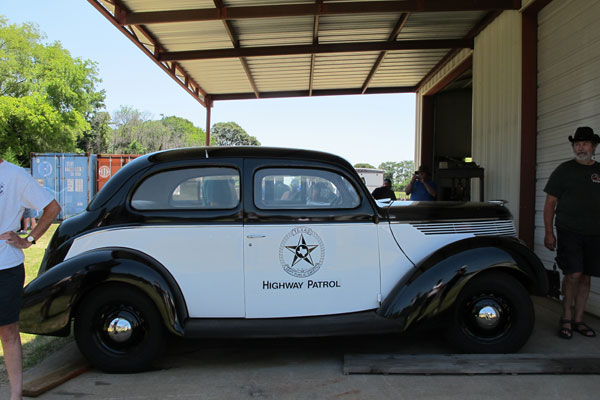
�
1938 Ford Police - 81A Tudor Sedan. (Tudor = "two door".)
�
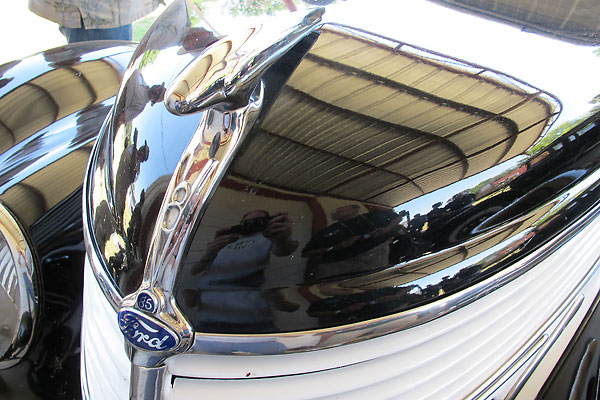
�
Ford V8 hood ornament.
�
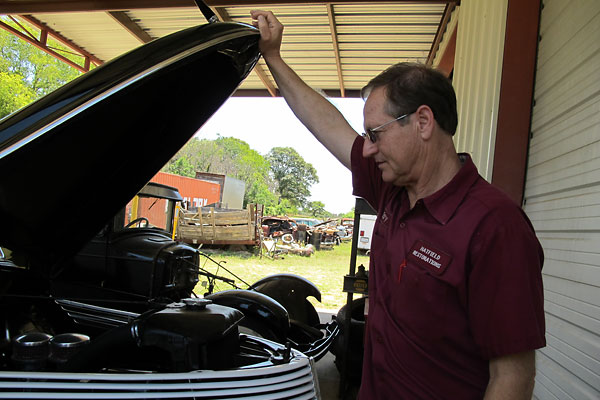
�
Gary seems to have a particular affection for this car.
�
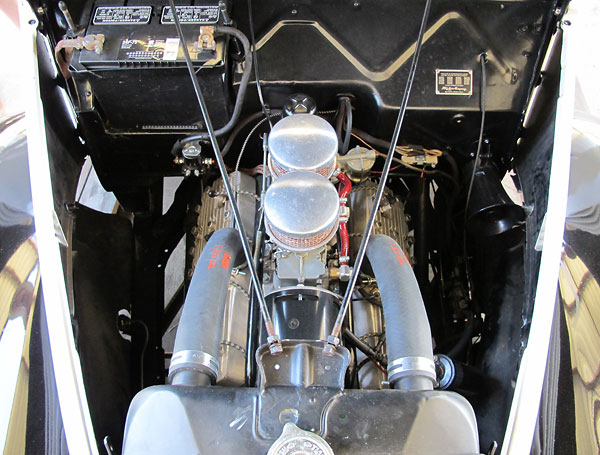
�
85hp flathead V-8 engine. Note radiator hoses!
�
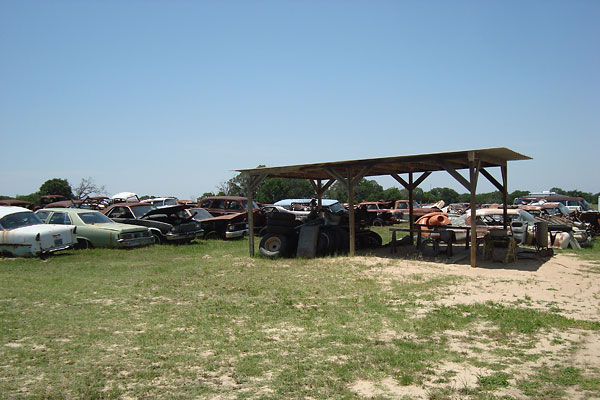
�
Hatfield Restorations' own little salvage yard.
�
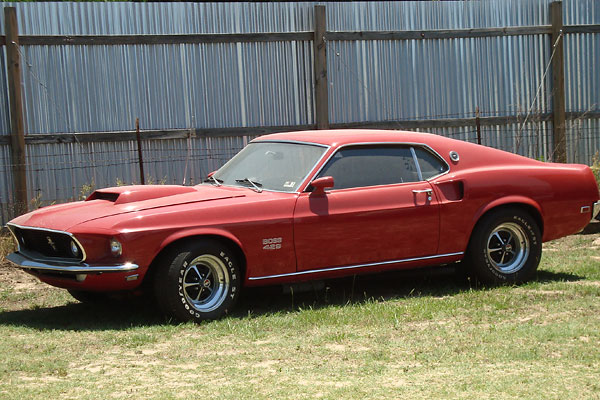
�
Ford Boss 429 awaiting restoration.
�
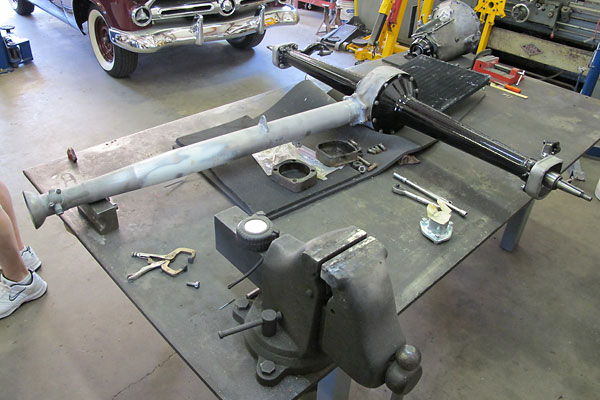
�
Ford Motor Company made more than its share of really cool looking stuff back in the day.
�
| �
Enjoying this article? Our magazine is funded through the generous support of readers like you! � To contribute to our operating budget, please click here and follow the instructions. � (Suggested contribution is twenty bucks per year. Feel free to give more!)� |
�
�
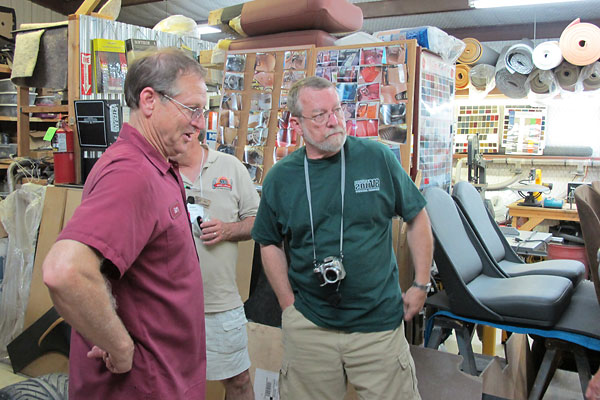
�
BritishV8 guys tour Hatfield Restorations' upholstery shop.
�
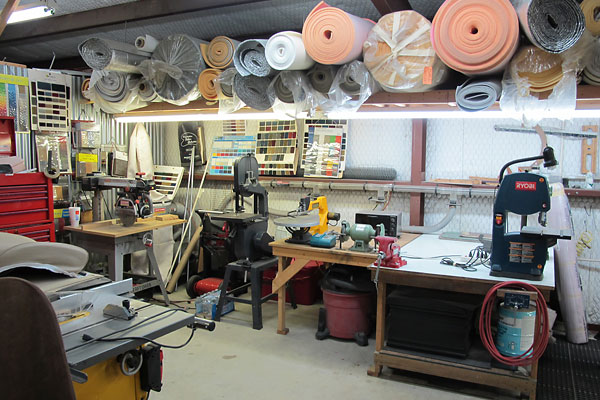
�
Left to right: table saw, radial arm saw, band saw, scroll saw, bench grinder, and another band saw.
�
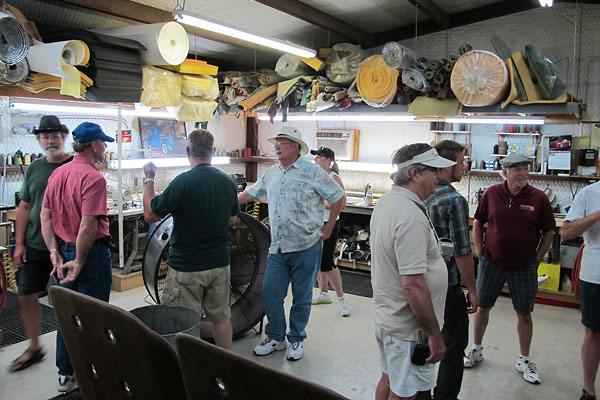
�
You'd see heavy duty sewing machines in this view, if there weren't people in the way.
�
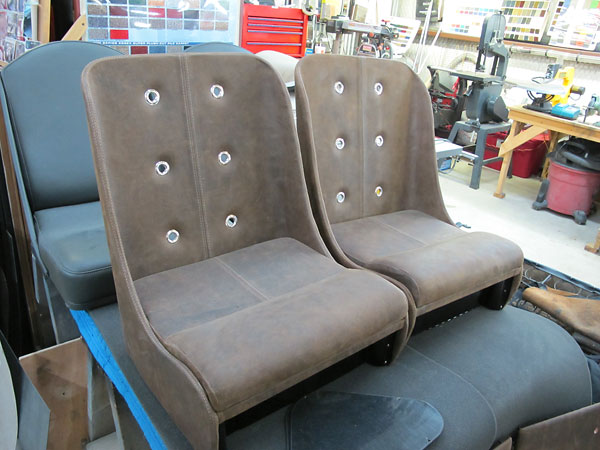
�
Sportycar seats!
�
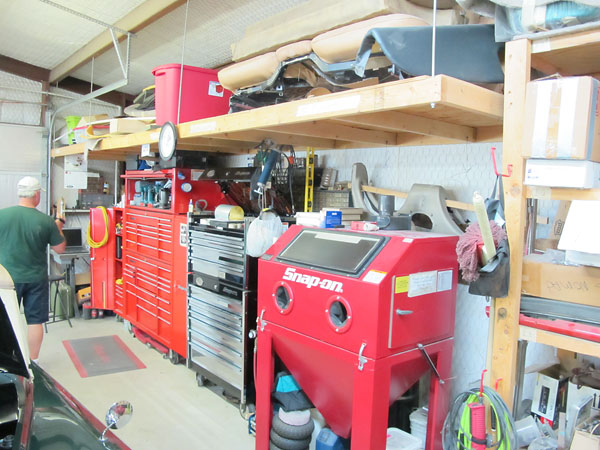
�
Blasting cabinet.
�
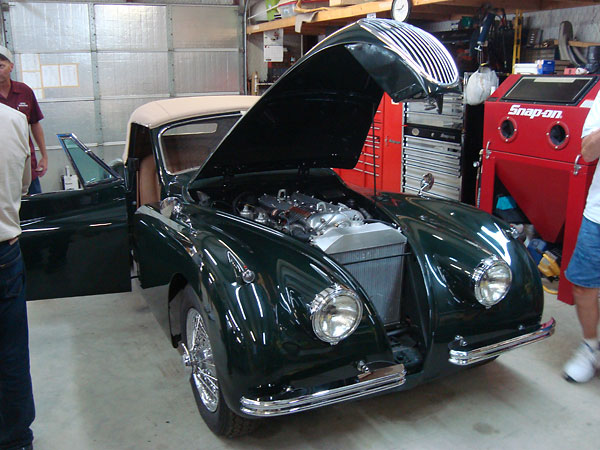
�
1954 Jaguar, getting reupholstered.
�
�
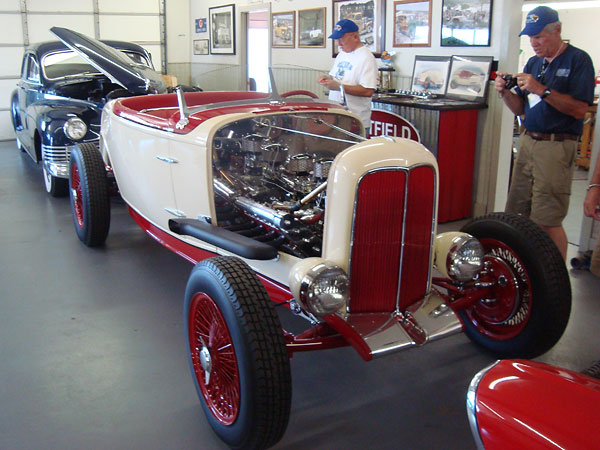
�
Don Smith's show stopping 1932 Ford "Riley Roadster".
�
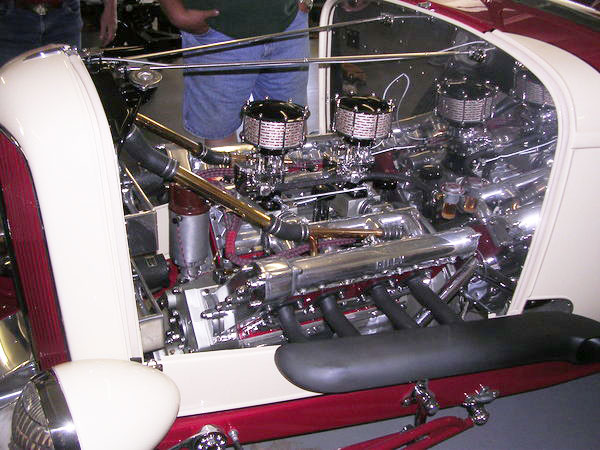
�
Gene Van Arx's original George Riley single overhead cam engine, circa 1936. To meet the letter of racing
�
class rules, Riley constructed these engines around stock Ford crankshafts, connecting rods, and pistons.
�
Everything else was custom; these were full-tilt racing mills mainly intended for use on the salt flats. From
�
a displacement of 221 cubic inches, Riley's SOHC engines produced ~200 horsepower yet weighed only
�
375 pounds. Of eight built, only two are known to survive. This one has a long, well documented history.
�
The other Riley SOHC engine resides in Bill Smith's (Speedway Motors) Museum of American Speed in
�
Lincoln Nebraska, which BritishV8 2013 participants will visit!
�
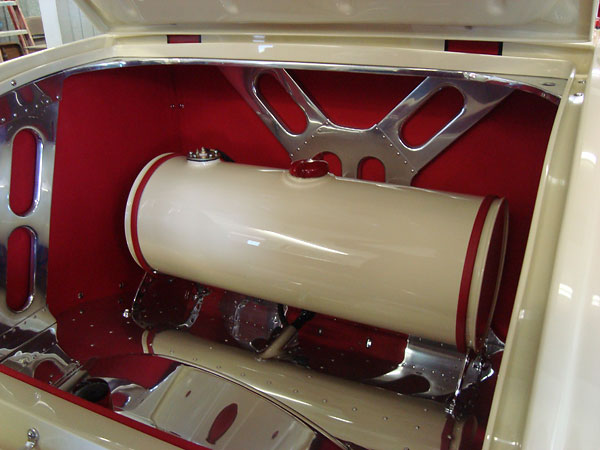
�
Boot details.
�
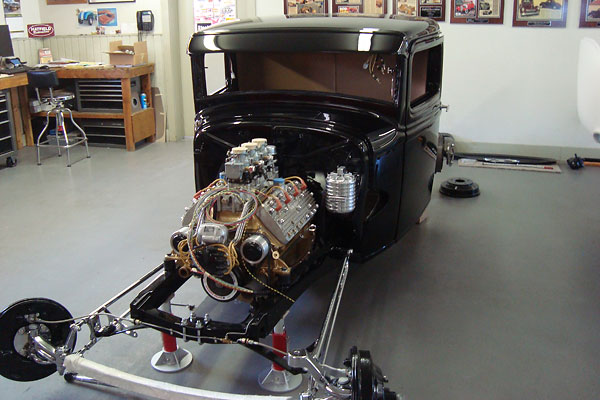
�
T-Bucket under construction.
�
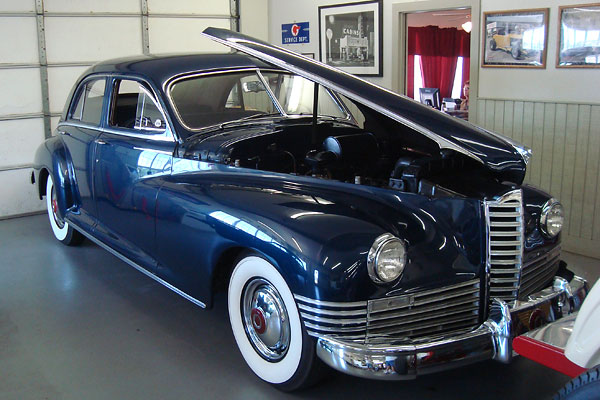
�
1946 or 1947 Packard Clipper.
�
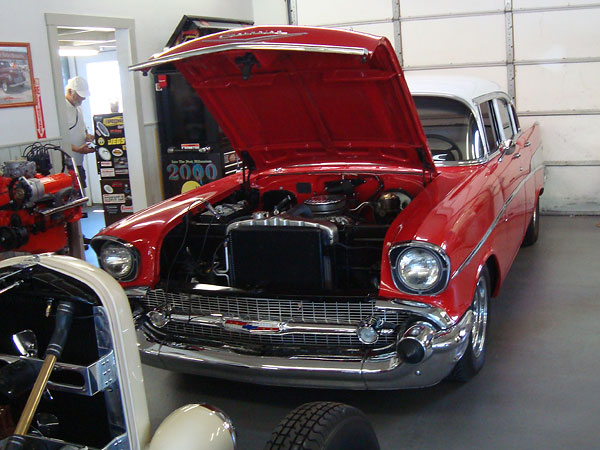
�
1957 Chevy.
�
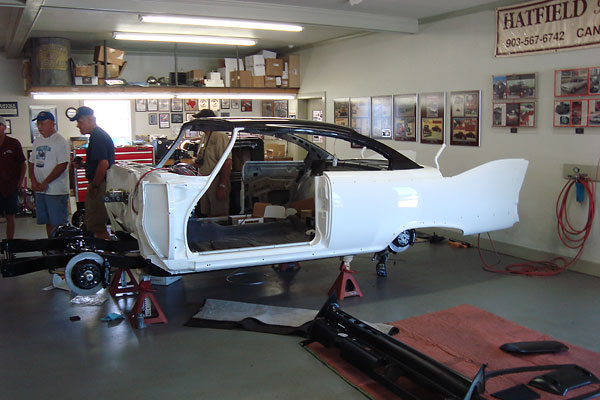
�
1961 Chrysler Imperial during restoration.
�
�
�
Disclaimer: This page was researched and written by committee.�
Views expressed are those of the authors listed above, and are provided without warrantee or guarantee.�
Apply at your own risk.�
�
Photos by Artie Clark (12), Graham Creswick (1), Carl Floyd (1), and Curtis Jacobson (26)�
for BritishV8 Magazine. All rights reserved.�

